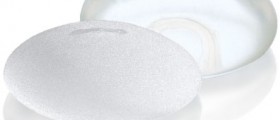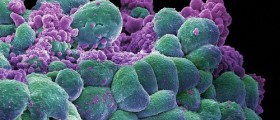
A screening mammogram or breast ultrasound can reveal the presence of a breast tumor known as fibroadenoma. In this article we will discuss breast fibroadenoma in detail.
What is Breast Fibroadenoma?A fibroadenoma is a benign or non-cancerous tumor of the breast which consists of glandular and fibrous breast tissue. Fibroadenoma can appear as a single lump or it be found in groups. A woman with multiple or complex fibroadenomas has a somewhat increased risk of breast cancer.
Breast fibroadenomas are the most common type of breast tumor in young women. It is usually found in women between 15 and 30 years of age. Also, African-American women are more susceptible to fibroadenomas than white women. In postmenopausal women fibroadenomas usually do not develop unless they are on hormone replacement therapy.
A fibroadenoma can be felt while doing regular breast self exams. Fibroadenomas are firm and round lumps with a smooth or rubbery texture. They are easily movable under the skin and this is why they are also referred to as “breast mice”. The lump may also be tender especially around monthly period because hormonal changes cause its swelling.
The size of a fibroadenoma ranges from 1 to 5 cm although some women may develop giant fibroadenomas that are about 15 cm in size. Fibroadenomas may enlarge in pregnant and breastfeeding women.
Diagnosis of Breast FibroadenomaTests like mammogram and breast ultrasound can detect a fibroadenoma. On a mammogram a fibroadenoma is seen as a round or oval mass with smooth edges. The borders of a fibroadenoma are clearly defined. Fibroadenomas may sometimes contain coarse calcifications. Additionally, the mass may appear like a cyst or a well-contained tumor.
To distinguish a fibroadenoma from other tissue a doctor will suggest a breast ultrasound. On ultrasound, fibroadenomas appear like dark area with a clearly defined outline, round or oval and uniform. If fibroadenoma is still not confirmed the doctor will perform a breast MRI. However, a definitive diagnosis can be obtained by a biopsy or a core needle biopsy.
Treatment for Breast FibroadenomaFibroadenomas that are small, do not change in size and do not cause pain generally do not require any treatment apart from watch and wait approach. They may sometimes shrink over time.
On the other hand, a breast fibroadenoma that is large, painful, increases in size or a biopsy shows abnormal cells, must be surgically removed in a procedure called lumpectomy. Fibroadenomas can be also removed with laser ablation that uses heat or cryoablation that uses freezing.



_f_280x120.jpg)













Your thoughts on this
Loading...